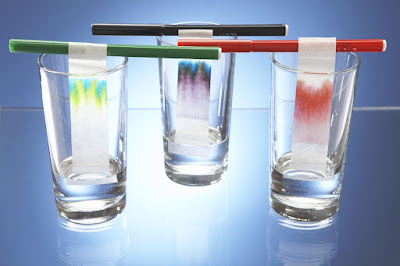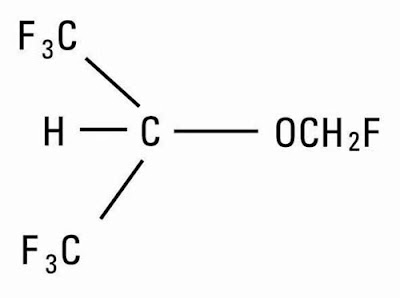Chromatography: A Recent Powerful Technique for separation of chemicals
 |
| Chromatography |
Chromatography is a scientific technique used to separate the components of a mixture based on their chemical properties. Over the past century, it has evolved into a powerful analytical tool that is widely used across multiple disciplines for research, diagnostics, and quality control.
What is Chromatography?
Chromatography works on the principle that different components of a mixture
move at different rates when transported between two phases, known as the stationary
phase and the mobile phase. The stationary phase is a solid material such as
alumina, silica, or a polymer, packed in a column. The mobile phase is a gas or
liquid that carries the sample mixture through the column.
As the mixture travels through the stationary phase, the individual components
distribute themselves between the two phases based on their partitioning
coefficients. Components that have a stronger interaction or affinity to the
stationary phase will move slower through the column, while those that prefer
the mobile phase will move faster. This differential rate of movement results
in the separation of the mixture into discrete bands of purified compounds.
Types of Chromatography
Based on the nature of the stationary and mobile phases, Chromatography
techniques are broadly divided into gas chromatography (GC), liquid
chromatography (LC), and thin-layer chromatography (TLC). Some commonly used
types are:
- Gas chromatography (GC): Uses an inert gas like helium as the mobile phase
and a non-polar stationary phase like silicone for separation of volatile
organic compounds. GC provides high resolution and is widely used for analysis
of fuels, perfumes, and pollutants.
- High-performance liquid chromatography (HPLC): Employs a liquid mobile phase
like water or organic solvents at high pressure and a polar solid stationary
phase for separating a variety of biological molecules. HPLC is a primary tool
in pharmaceutical quality control.
- Ion-exchange chromatography: Targets charged analytes using a stationary
phase with oppositely charged functional groups. It finds application in
protein purification and environmental analysis.
- Size-exclusion chromatography: Also known as gel-filtration chromatography,
separates molecules based on their size or molecular weight using a porous
stationary phase. Useful for the characterization of polymers and proteins.
- Affinity chromatography: Exploits the specific affinity of an analyte for
another molecule or ligand immobilized on the stationary phase. Employed in
biochemical assays and isolating monoclonal antibodies.
Applications of Chromatography
Over the last few decades, chromatography has played a pivotal role in numerous
scientific advances:
- Medical Diagnostics: Thin-layer and HPLC techniques are extensively used to
analyze drugs, hormones, lipids, and other biomarkers in clinical samples for
disease screening and monitoring therapeutic efficacy.
- Forensics: GC-MS has become the gold standard for drug and poisoning
analysis, fiber identification, and detection of explosives in forensic
casework investigations and criminal prosecutions.
- Environmental Analysis: Chromatographic methods enable sensitive and specific
identification of a wide range of environmental pollutants in air, water and
soil samples, contributing greatly to monitoring ecological health.
- Food Analysis: Quality control of food products relies heavily on GC and HPLC
to check for toxic residues, authenticate ingredients, and maintain food safety
standards.
- Archaeology: TLC and GC-MS aid archaeologists in identifying residues on
ancient artifacts, revealing clues about early use of pigments, medicines, and
economic plant cultivation.
Future of Chromatography
Advances in column technology, detection systems, hyphenated techniques, and
computational methods continue to push the boundaries of chromatography
further. Emerging areas like nano-liquid chromatography, multidimensional
separations, ultrahigh pressure liquid chromatography and comprehensive
two-dimensional gas chromatography are driving even greater improvements in
resolution power, speed, sensitivity and information content. With growing
application areas in fields like metabolomics, lipidomics, proteomics and
systems biology, chromatography will remain at the forefront of analytical
science in the 21st century. Its ability to deal with complex biological
samples position it uniquely as an indispensable facilitator of basic research
and translational medicine.
Get More Insights on Chromatography


Comments
Post a Comment